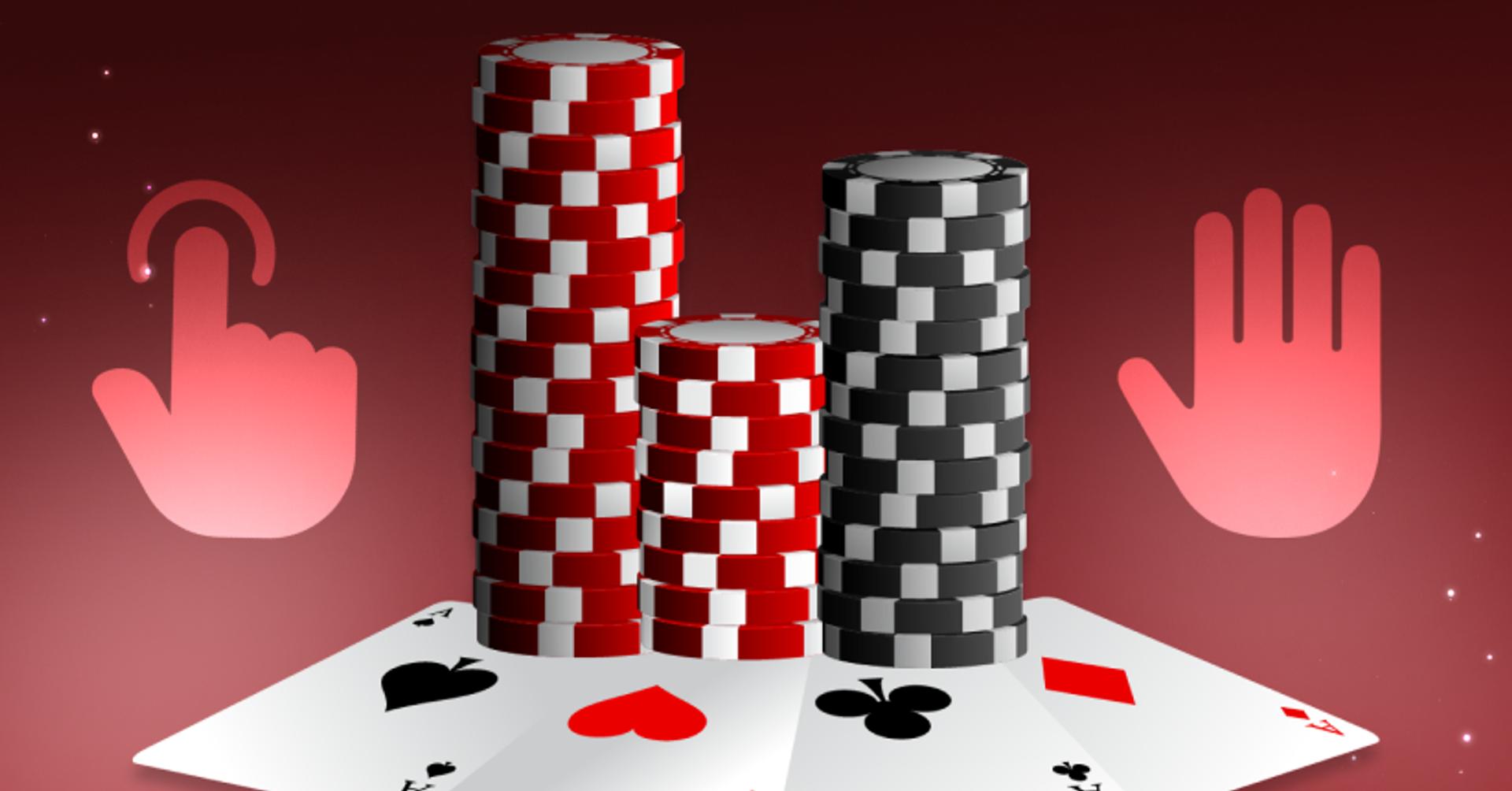When to Hit or Stand in Blackjack: Beat the Dealer Guide

Few choices at the Blackjack table matter more than deciding when to hit in Blackjack and when to stand. The hesitation can cost you big on Jackpot.bet.
Each move carries risk, but with the right approach, you can shift the odds in your favor. The trick is matching your play to both your cards and the dealer’s upcard.
To master this balance, our guide breaks down exactly when to hit and when to stand. We will also explain how to read the dealer’s upcard to make the cleverest moves.
What Does Hit and Stand Mean in Blackjack?
Before diving into strategy, it is crucial to understand the basics of Blackjack. So, what does hit mean in Blackjack?
Hitting is asking for another card from the dealer. You “hit” when your current total is weak, hoping to build closer to 21 without going over. But what does stand mean in Blackjack?
Standing is choosing not to take any more cards. You “stand” when your total is strong enough that the risk of busting outweighs the potential reward of drawing.
On Jackpot.bet, every decision in Blackjack comes down to whether hitting improves your odds or if standing gives you the better chance to win against the dealer’s hand.
Hard Totals: When to Hit or Stand
Hard totals are hands without an Ace counted as 11. They don’t have the same flexibility as soft hands, which makes every decision more important. Here’s the breakdown:
-
8 or less: Always hit. The hand is too weak to compete without improvement.
-
9: Hit unless the dealer shows 3s-6s, where doubling is stronger if the rules allow.
-
10-11: Hit if the dealer has a 10 or Ace. Against anything lower, double down for the best return.
-
12-16 (The “stiff” hands): Stand if the dealer shows 2s-6s, since the odds lean toward the dealer busting. Hit if the dealer shows 7s-Aces, because your hand is too weak to survive without help.
-
17 or more: Always stand. You’re already in strong territory, and hitting only risks a bust.
Hard totals can feel uncomfortable because busting is always a possibility. But sticking to these rules might minimize losses and give you the best chance to outlast the dealer.
Soft Totals: When to Hit or Stand
Soft totals are hands that include an Ace counted as 11. The Ace gives flexibility, because if you draw a high card, you can simply count the Ace as 1 instead. Due to this, you can be more aggressive with soft hands.
-
Ace + 2 or Ace + 3 (Soft 13-14): Hit, unless the dealer shows 5s or 6s, where doubling can be stronger.
-
Ace + 4 or Ace + 5 (Soft 15-16): Hit, but double against dealer 4s-6s if possible.
-
Ace + 6 (Soft 17): Hit against dealer 7s-Aces, double against 3s-6s, stand against 2s.
-
Ace + 7 (Soft 18): One of the trickiest hands. Stand against dealer 2s, 7s, or 8s, double against 3s-6s if allowed, and hit against 9s, 10s, or Aces.
-
Ace + 8 or Ace + 9 (Soft 19-20): Always stand; these are already strong hands.
-
Soft 21 (Ace + 10): This is Blackjack, you don’t touch it.
Pro Tip: Soft totals let you risk hitting or doubling without the usual fear of busting, giving a chance to improve weak hands.
Dealer’s Upcard: Adjusting Your Strategy on Jackpot.bet
Every hit or stand decision depends not only on your total but also on what the dealer’ upcard is. On Jackpot.bet, your strategy should change based on the dealer’s upcard:
Weak Dealer Upcards (4s-6s)
When the dealer’s upcard is weak, such as a 4s, 5s, or 6s, the odds of them busting rise sharply. In such cases, standing on totals like 12-16 is the smarter move.
Although standing can feel risky, it’s the strategy that gives you the best odds against the dealer.
Middling Dealer Upcards (2s, 3s, 7s)
With middling cards like 2s, 3s, or 7s, the situation depends on the specific card. When the upcard is 2 or 3, it’s usually best to stand on 12-16, as the dealer is more likely to bust.
However, against 7, always aim for totals of 12-16 because standing will probably result in a losing hand.
Strong Dealer Upcards (8s, 9s, 10s, Aces)
Strong upcards, especially 8s, 9s, 10s, or Aces, shift the advantage to the dealer. Here, playing passively often leads to a loss.
You’ll need to hit more often, even if it means risking a bust. With soft hands, you may press the advantage by hitting or doubling to reach a stronger number.
Overall, reading the dealer’s upcard correctly is key. Always consider how your total compares to the dealer’s likely outcome.
Pro Tip: The Ace is especially dangerous. Avoid side bets like insurance and stay disciplined.
Common Mistakes When Hitting or Standing on Jackpot.bet
One of the biggest mistakes players make is letting fear of busting dictate every decision. Standing on hands like 12 through 16 against a dealer’s strong upcard may feel safe,
But in reality, it leaves you with a losing hand most of the time. Hitting in those spots is uncomfortable, yet it gives you the best chance to compete.
Another common mistake is treating soft hands like hard ones. For example, many players freeze on a soft 18, assuming it’s strong enough to win. Against a dealer showing 9s, 10s, or Aces, hitting or doubling is usually the correct move.
Some players also ignore the importance of the dealer’s upcard altogether, focusing only on their own total. Blackjack on Jackpot.bet is about how they stack up against the dealer’s potential outcome.
Missing that perspective leads to costly decisions over time. So, avoiding these pitfalls is as important as memorizing the rules.
Conclusion
Mastering when to hit and when to stand is what turns Blackjack from a guessing game into a strategy-driven battle with the dealer.
Hard totals demand discipline, soft totals call for flexibility, and every decision should consider the dealer’s upcard.
Avoiding common mistakes, like standing too often on weak hands or misplaying soft totals, keeps the odds as low as possible for the house.
So, stick to the rules, play with confidence, and you’ll know exactly when the right move is. Such a balance is what gives you the best chance to beat the dealer on Jackpot.bet.
Frequently Asked Questions
When should you hit in Blackjack?
Hit when your total is too weak to compete, especially with hard hands of 12-16 against a dealer showing 7s through Aces. In these cases, standing leaves you at a disadvantage.
Blackjack when to stand?
Stand on strong hands like 17 or more, and also on stiff hands (12-16) when the dealer is showing 2 through 6. It forces the dealer to play out a weak spot, often resulting in a bust.
Do you stay or hit at 13, 14, 15 in Blackjack?
It depends on the dealer’s upcard. Stand against 2s-6s, and hit against 7 through Ace. Following this rule prevents you from holding weak hands that the dealer will almost always beat.
What is the golden rule of Blackjack?
Always follow the basic strategy. Relying on charts and math, not instinct, keeps the house edge as low as possible.
What is the 777 rule in Blackjack?
The “777 rule” is a house-specific feature in some casinos where hitting a suited 7-7-7 pays a special bonus. It’s not part of standard strategy, but it’s worth knowing if the table advertises it.









